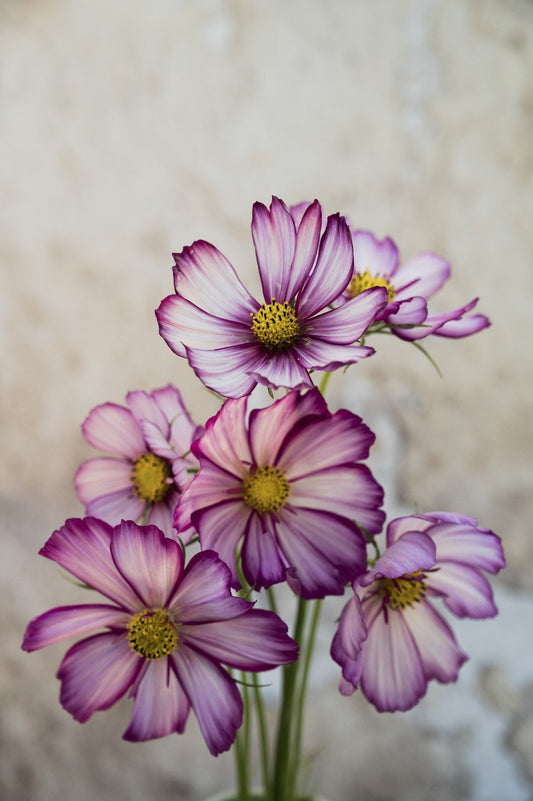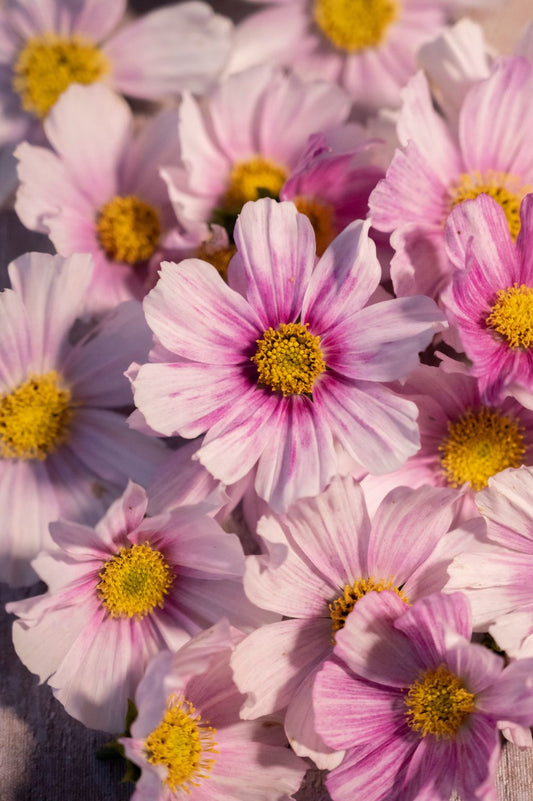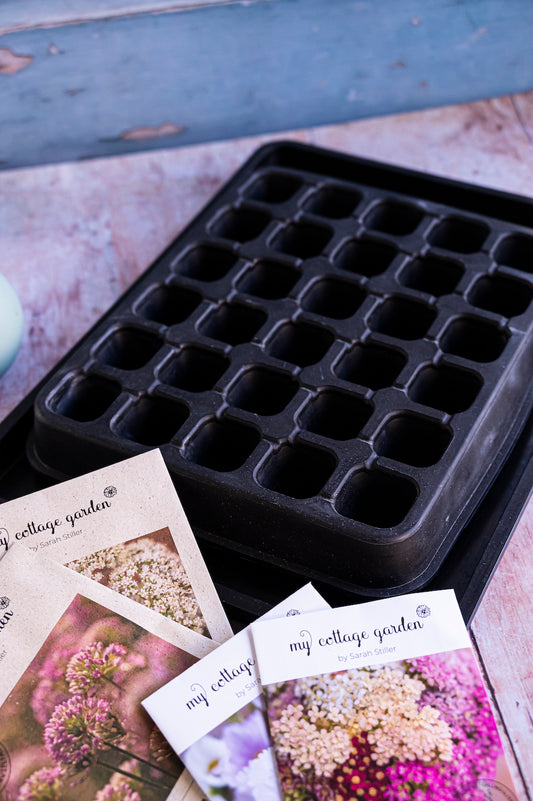COSMEEN – Everything you need to know for a flower-rich summer with Cosmos
No summer without cosmos!
If you are looking for a flower that will bring you joy all summer long, is absolutely uncomplicated and turns your garden into a sea of flowers, you should take a closer look at cosmos (cosmos).

Briefly and concisely summarized for you:
- You can easily grow them indoors (April is the best time because they grow quite quickly and you can move them outside soon!).
- Once the frost is over, you can sow them directly outside.
- The germination rate is high - usually one seed per pot is enough.
- Whether pot or bed – both are wonderful.
- Afraid of snails? You can protect them in pots with Schnexagon .
- It is better not to fertilize, otherwise they will produce many leaves but fewer flowers.
- You should definitely pinch them.
Want to delve deeper? Then read on...
Cosmos are absolute beginners' flowers – both when it comes to sowing and caring for them. They bloom tirelessly from June (if grown early) to October, make enchanting cut flowers, and simply make you happy. About 200 years ago, these wonderful creatures found their way (from South America) to our shores: Cosmos, quite rightly called "cosmos" (cosmos baskets).
With their flowers reminiscent of very large daisies and delicate, feathery leaves like dill, they are, for me, the epitome of summer flowers. Depending on the variety, cosmos grow between 30 centimeters and over two meters tall and delight us with their persistently recurring blooms. Single, semi-double, and double.
They come in all possible shades of color, from white to apricot, yellow, pink, burgundy, purple and even bicolored flowers.

Kosmee Double Dutch White .

Kosmee Sweet Kisses

Kosmee Tetra Versailles Dark Rose

Cosmos Tetra Versailles Flush
You can find all Cottage Garden Cosmos HERE .
These annual plants are extremely undemanding when it comes to soil—you'd never believe it given their abundance of flowers. Sun is optimal, but partial shade will do in a pinch—they won't bloom quite as prolifically. It's best not to fertilize them (fertilizer promotes leaf growth rather than flower growth), and they can also tolerate short dry periods. In pots, they need regular watering.
The only care you should give them (selfishly, because they'll bloom more!) is pruning. The more you cut off the wilting flowers (or fresh ones for the vase), the more they'll reward you with blooms.

Bed planning 2020 in the cottage garden with "A Year in Flowers" by Erin Benzakein.
SOWING
Sowing is just as easy as caring for them. You can either start them about a month before planting the seedlings (highly recommended! This way, they'll have a head start on snails, bloom earlier, and are less likely to be overrun by weeds, which can easily happen with small seedlings), or you can sow them directly into the bed once the night frosts have passed.
Or planting them directly in pots outdoors also works well. Cosmos usually germinate very well, so if you start them in small pots, one seed per pot is enough (preferably in potting soil). Just a week later, the green heads will peek out of the soil, and at the latest three months after sowing, they'll unfold their beautiful cosmos.
If you've preferred them, gently get them used to the outdoors and the sun. Let them out a little longer each day...

Be sure to keep it in a bright spot, otherwise its stems will become long and crooked. However, you can solve this later by placing the plant with its root ball deep into a new pot and filling it completely with soil (leaving only a bit of the stem and leaves).



When planting, you should leave a distance of 30 to 40 centimeters between each plant, which will ensure a bushy display of flowers later on. Plant in groups of three, for even greater effect. And this is the only area where cosmos plants are a bit labor-intensive: The young plants are a top target for snails. Therefore, the seedlings require special protection during the initial period. I like to plant them in large pots and then place the pots directly in the garden bed. You can then coat them with Schnexagon .

Isn't it incredible? The Cosmos Apricot .
Tweezing
You can pinch them to make them bushier and produce more flowers. Here's how: When the young plants are about 20 to 30 centimeters tall, cut the shoot tip back by a third. They will then form multiple shoots. During the flowering period, be sure to remove the wilted flowers; the cosmos will thank you with tireless new bud formation.

CUT FLOWER
No cut flower garden or bed would be complete without cosmos. They add a touch of charm to any bouquet, whether single or mixed. It's best to cut them before the blossoms fully open, as they'll last in a vase for about a week.

Beautifully combined with field fennel –
You can get the Kosmee Double Dutch Rose HERE .
GAP FILLER
Cosmos are wonderful for filling gaps in the flowerbed, decorating bare corners, or simply in a pot to bring summer and color into the garden and into life.

This is the wonderful Cupcake Blush. You can find it HERE .
And if you're lucky, they'll simply reproduce themselves and you'll find them in different locations from year to year.
Feeling excited too?
Then take a look at this selection of beautiful varieties !

Rubenza – more about this beauty HERE .

Photos: Janina Laszlo, Michaela Eriksson
































